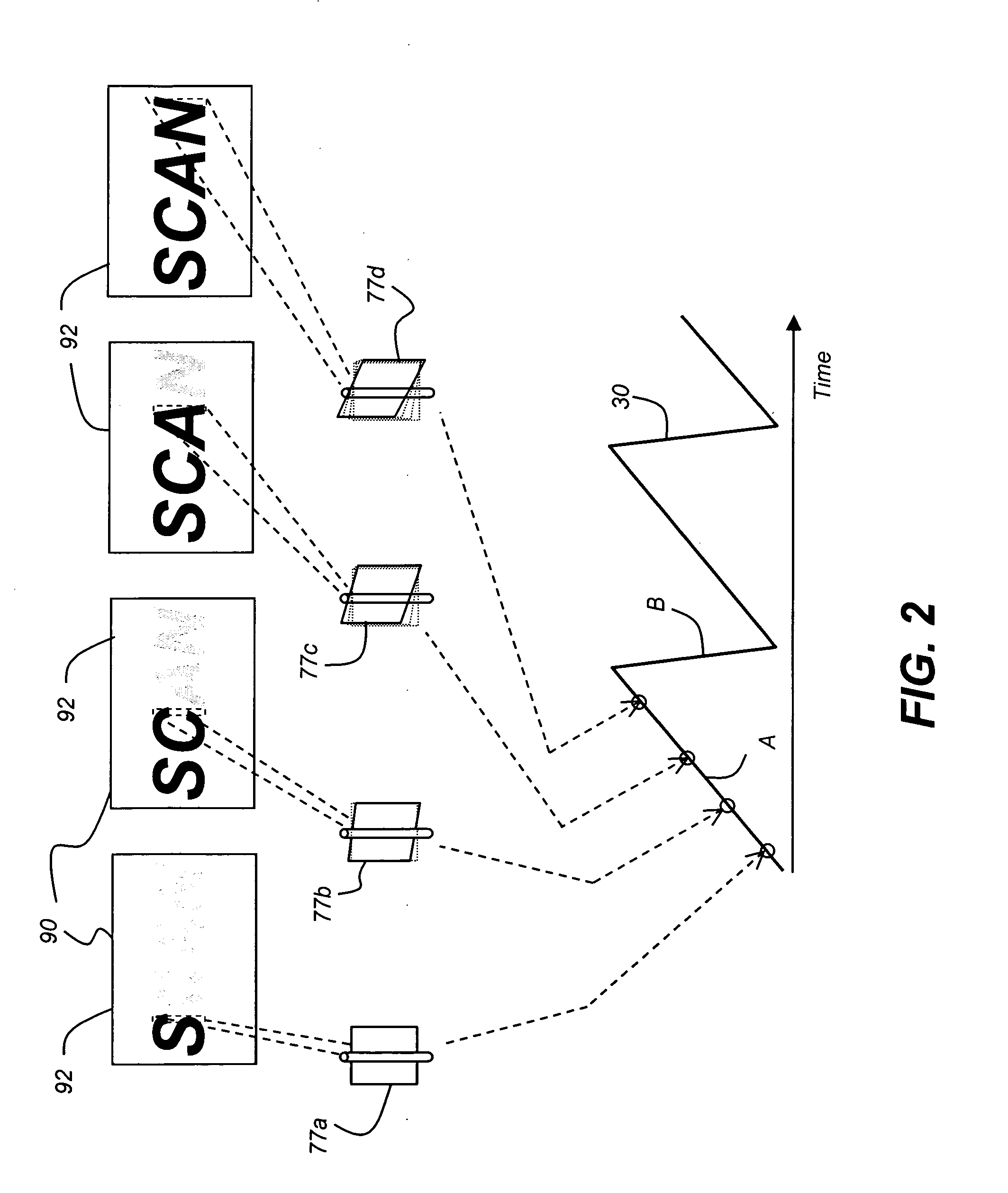Display using bidirectionally scanned linear modulator
a linear modulator and display technology, applied in the field of display apparatus using linear light modulators, can solve the problems of reducing the available light output, limiting the light efficiency that can be obtained, and inherent limitations of display solutions that use these devices, so as to improve the effective duty cycle, reduce complexity, and add brightness
- Summary
- Abstract
- Description
- Claims
- Application Information
AI Technical Summary
Benefits of technology
Problems solved by technology
Method used
Image
Examples
Embodiment Construction
[0046]The present description is directed in particular to elements forming part of, or cooperating more directly with, apparatus in accordance with the invention. It is to be understood that elements not specifically shown or described may take various forms well known to those skilled in the art. Figures shown and described herein are provided in order to illustrate key principles of operation of the present invention and are not drawn with intent to show actual size or scale. Some exaggeration may be necessary in order to emphasize relative spatial relationships or principles of operation.
[0047]In the following disclosure, the phrase “left-eye image” denotes the image formed by a display apparatus and intended for viewing by the left eye of the viewer. Likewise, the phrase “right-eye image” refers to the separate image that is intended for viewing from the right eye of the viewer. The terms “stereoscopic” and “3-D” are considered to be equivalent.
[0048]In the context of the prese...
PUM
 Login to View More
Login to View More Abstract
Description
Claims
Application Information
 Login to View More
Login to View More - R&D
- Intellectual Property
- Life Sciences
- Materials
- Tech Scout
- Unparalleled Data Quality
- Higher Quality Content
- 60% Fewer Hallucinations
Browse by: Latest US Patents, China's latest patents, Technical Efficacy Thesaurus, Application Domain, Technology Topic, Popular Technical Reports.
© 2025 PatSnap. All rights reserved.Legal|Privacy policy|Modern Slavery Act Transparency Statement|Sitemap|About US| Contact US: help@patsnap.com



